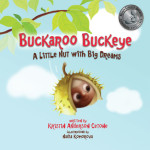
PART 1: Reading Tests and Parent Involvement: Standardized Tests.
What do those standardized reading test scores mean? Reading is a learned skill. We are not born with the natural ability to read!
Okay parents, you have received results for your child’s ‘standardized’ reading test scores.
- Now what?
- What do they mean?
- What can you do?
Here are some insights that I hope will guide you. You are your child’s first responder and team captain of their ‘Reading Success Team.’ I am offering an overview to you as their team captain, for working with other members of your child’s team inclusive of their classroom teacher, reading specialist if applicable, or school intervention team/school study team, if applicable, and the child’s primary care/pediatrician.
DISCLAIMER: I am not offering clinical diagnosis or intervention with this blog. I am however, available to clarify any questions you might have regarding your child’s reading process and any reading struggles they may be experiencing. Please Contact me at kr*****@ww*.com.
Let’s look first at “Standardized” testing. These are often referred to as ‘formal assessments.’ These tests have statistics that support the conclusions, or standard measures, made from the tests. These are norm-referenced tests based on a large body of students tested for that grade level and subject matter either from around the nation or the state in which you live but not necessarily your local school district’s curriculum.
The most common results are reported as:
Grade-Equivalent Scores: which is a score that compares your child’s performance on grade-level material against the average performance of students at other grade levels on that same material. This score is most often reported in terms of grade level and months. If your 6th grade child obtains a grade-equivalent of 10.5 this translates at 10th year 5th month which is a mid-year level of tenth grade.
This grade-equivalent score does not however mean that your child is reading at the mid-10th grade level. It means that they can read 6th grade material as well as the average 10th grade student can read. Your child is reading much better than the average 6th grader but most likely would not perform as well if tested using 10th grade material as they have not yet been exposed to 10th grade material.
Caution should always be exercised when interpreting grade equivalents, and not be used as a sole basis for grade placement discussion!
Percentile Ranks: compare your child’s performance with other students at the same grade or age level. Percentile ranks range from 1 to 99. A percentile rank of 50 or 50th percentile, means your child scored higher than 50 out of 100 same-grade or same-aged peers. If your child obtains a percentile rank of 40 on reading, it means they scored higher on that test than 40 out of 100 same-grade or same-aged peers. ‘Percentile rank’ is not the same as ‘percentage correct.’ This score would indicate a deficiency in your child’s reading process but it does not pinpoint more specifically. The percentile ranks on reading subtests, if reported to you, will help more. These subtests usually only address comprehension for ‘types’ of reading material but again, as a parent, what does this mean as far as strengthening your child’s reading process and what the teacher and you can do along this goal???
Stanine Scores: Stanine is an abbreviation for ‘standard nine.’ It allows comparison between your child’s performance and other students at the same grade level. Stanines range from 1 – 9.
- 1-3 being Low
- 4-6 Average
- 7-9 High
Assessment varies from test to test. The three terms I have included here do not include all the terms you might encounter on your child’s testing. Their scores should, however, be accompanied with information to help you interpret them.
Tests for those states who have adopted the Common Core Standards are under consideration. The Smarter Balance and PARCC tests are in their infancy. Also in controversy are those states who have opted out of Common Core and are devising their own measures. Always check with your respective state’s Department of Education for guidance.
Some common standardized tests you may be familiar with in the interim, that address reading skills, are:
- Iowa Test of Basic Skills (ITBS)
- Stanford Achievement Test
- NAEP for 4th and 8th graders
- California Achievement Test (CAT)
- TerraNova
- Gates-McGinitie
- and many more… SEDL.org
As a Reading Specialist, I want to emphasize that standardized test scores are not always the most significant measure when attempting to guide instruction and/or reading intervention, or offer ways a parent can engage in their child’s reading success. These scores are most helpful when used in conjunction with other measures of your child’s reading ability level such as observation, classroom teacher insights, frequent ‘informal assessment/screens, and other developmental assessments from teachers, parents, and other professionals.

Check with Mrs. C about her Convenient, Safe, and Affordable online, informal, reading assessment for Grades 1 through 3. I help parents guide their child’s reading success! www.Nutsaboutreading.com
 And, as a reminder, your child’s reading success begins at birth with reading aloud to them and with them as they grow. Buckaroo Buckeye™ is an inspirational and entertaining read aloud book for children of all ages. YIPPEE! BuckarooBuckeye
And, as a reminder, your child’s reading success begins at birth with reading aloud to them and with them as they grow. Buckaroo Buckeye™ is an inspirational and entertaining read aloud book for children of all ages. YIPPEE! BuckarooBuckeye
What Do Those Standardized Reading Test Scores Mean? First appeared on NutsAboutReading.com.
Resources:
www.scholastic.com
www.sedl.org



